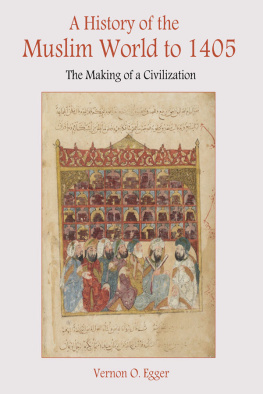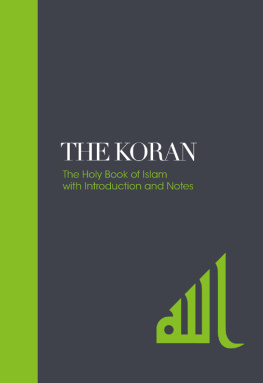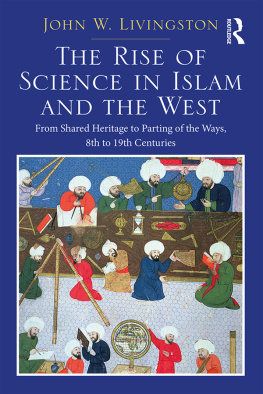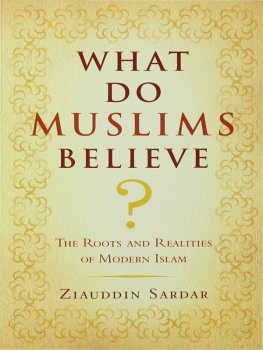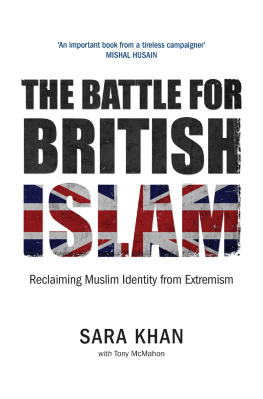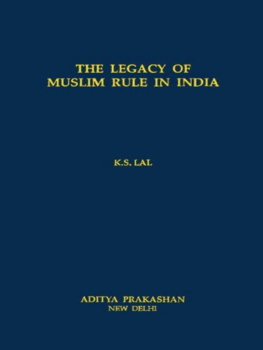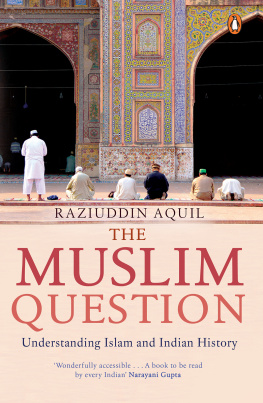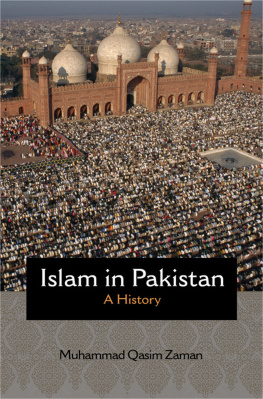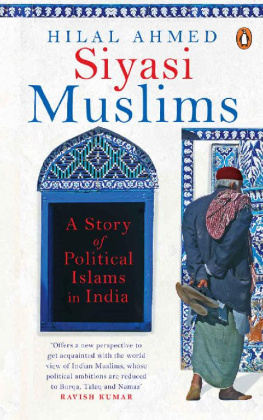First published 2004 by Pearson Education, Inc.
Published 2016 by Routledge
2 Park Square, Milton Park, Abingdon, Oxon OX14 4RN
711 Third Avenue, New York, NY 10017, USA
Routledge is an imprint of the Taylor & Francis Group, an informa business
Cover Design: Jayne Conte
Credits and acknowledgments borrowed from other sources and reproduced, with permission, in this textbook appear on page 327.
Copyright 2004 Taylor & Francis
All rights reserved. No part of this book may be reprinted or reproduced or utilised in any form or by any electronic, mechanical, or other means, now known or hereafter invented, including photocopying and recording, or in any information storage or retrieval system, without permission in writing from the publishers.
Notices
Product or corporate names may be trademarks or registered trademarks, and are used only for identification and explanation without intent to infringe.
Library of Congress Cataloging in Publication Data
Egger, Vernon
A history of the Muslim world, to 1405 / Vernon Egger
p. cm.
Includes bibliographical references and index.
ISBN-13: 978-0-13-098389-3 (pbk)
1. Civilization, Islamic. 2. IslamHistory. I. Title
DS36.85.E34 2004
909.097671dc21
2003052833
This book is an introduction to the history of the Muslim world for readers with little or no knowledge of the subject. I use the term Muslim rather than Islamic because this is a study of the history made by the Muslim peoples rather than a history of the religion of Islam. It is important to make a distinction between Muslim and Islamicproperly speaking, Islamic should refer to elements of the religion, while Muslim relates to the adherents of the religion. Thus, not all customs followed by Muslims are Islamic, and although a mosque is an example of Islamic architecture, a palace is not. A generation ago, the great scholar Marshall Hodgson wrestled with this problem and coined the term Islamicate to describe the cultural features of Muslim societies that were not strictly religious, such as secular architecture. The term has not gained widespread acceptance, and this book will avoid it.
If the distinction between Islamic and Muslim seems strained, suppose that someone said that the White House is an example of Christian architecture because a Christian designed it, or that Bastille Day is a Christian holiday, since it is celebrated in a country with a Christian majority. No one is tempted to make such assertions, and yet they are equivalent to speaking of Islamic palaces or Islamic medicine, as many historians do. Much of the history related in this book is not directly related to Islam, and so it is more appropriately called Muslim history.
The phrase Muslim world, as used in this book, refers to regions ruled by Muslimdominated governments, as well as areas in which the Muslim population is a majority or an influential minority. For several decades in the seventh century, the Muslim world was coterminous with the region often referred to today as the Middle East, but it soon expanded far beyond that heartland. By the tenth century, many of the most important cultural developments in the Muslim world were taking place outside the Middle East. The size of the Muslim world has alternately expanded and contracted over time, and we will be concerned to see how and why that has happened.
The themes of the book are tradition and adaptation. The history of any society is one of the preservation of core values and practices, but also one of adaptation to changing conditions. Muslims follow a religion that is strongly anchored in both scripture and authoritative codes of behavior and are conditioned to adhere closely to the canon of their religious tradition. On the other hand, from the very beginning of their history, Muslims have found ways to adapt elements of their faith to their culture, as well as to adapt their cultural values and practices to the core of their faith. Islam is no more of a homogeneous world religion than is Christianity or Judaism.
The themes of tradition and adaptation allow us to make sense of some important issues in Muslim history. By being aware of the premium placed on faithfulness to the scriptures, we can understand more clearly how Muslims were able to maintain a common sense of identity throughout the wide expanse of the world in which they settled. Further, we can more readily appreciate why Muslims have accepted certain features of alien cultures and rejected others. From the first century of the Islamic calendar, when Muslims were having to decide how to administer a huge majority of non-Muslims in the former Byzantine and Sasanian empires, until today, when many Muslims are concerned about the impact of a secular, global economy on their heritage, the tension between adherence to tradition on the one hand and adaptation to changing conditions on the other has been at the center of Muslim concerns.
This book treats economic, political, intellectual, and social developments over a wide area and across many centuries. Of these topics, the intellectual and political developments receive more attention than social and economic history. The study of the social history of the Muslim world is in its infancy. Therefore, it is not possible at this point to write the history of the daily lives of ordinary men and women in large areas of the Muslim world. Economic history tends to stress connections among areas of the world, which is why it is a popular theme in the field of world history. The motif of connections and of global integration that economic history can convey runs throughout this book as a powerful undercurrent. In the first decade of the twenty-first century, however, I am convinced that our awareness of connections in Muslim history needs to be balanced by an awareness of diversity and discontinuities. Troubling stereotypes of Islam and of Muslims loom large in our culture and can be modified only by our becoming aware of the diversity of religious and political expressions within the Muslim world.
A widely held assumption in our society is that Islam is a crystallized artifact from the seventh centuryor, at best, from the tenth or eleventh century, when Islamic law is often said to have stopped developing. It is important to be aware of the important stages in the historical development of Islam and to realize that critical periods in history have encouraged Muslims to be either flexible or inflexible in their reception of new ideas. It is also important to be aware of the varieties of expression of Islam. Many generalizations about Islam are actually applicable only to Sunni Islam, and even then, to the Sunni Islam practiced in certain countries, not to regions in other parts of the world. The history of Shiite Islam is usually ignoredor recognized only in passing. Shiites have played a major role in history and should be recognized for having done so.
Another widely held stereotype is that Muslims form a monolithic, homogeneous mass that acts in concert on given issues. In recent years, this assumption has given rise to the notion that Islam and the West are on the eve of a clash of civilizations. According to this theory, when Muslims in one area have a grievance against the West, other Muslim groups will come to their aid on the basis of their civilizational kin. The impression of a monolithic Muslim world is reinforced by the fact that many world history books discuss the Abbasid caliphate (7501258) as though it were an empire that united the great majority of the worlds Muslims of that age, leaving the impression that Muslims have a history of political unity. Even the textbook discussions of the sixteenth- and seventeenth-century empires of the Ottomans, Safavids, and Mughals rarely note their great differences. The fact is that Muslim political unity was shattered in the third decade after the Prophets death. There have been numerous Muslim political entities ever since then. Not only have conflicting interests divided them, but Muslim states have also frequently allied with Christian, Hindu, or other states against fellow Muslims.

